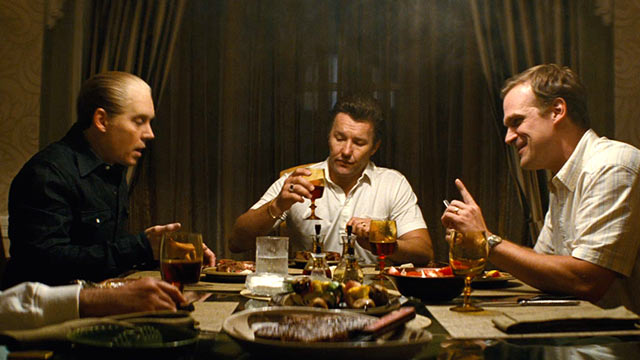When
George Lucas sold the rights to “Star Wars” along with his company Lucasfilm to
Disney and it was announced that Spielberg’s spiritual successor J.J. Abrams,
of “Super 8” and the recent “Star Trek” films, would relaunch the series with an
additional numerical installment, devotees were instantly optimistic about the
possibility of the series redeeming itself from the dampened legacy of the
franchise. “Star Wars: The Force Awakens” is as much a soft-reboot as it is the
seventh episode of Lucas’ grand saga. Many familiar elements are reintroduced
through new characters and the old cast members are brought back to pass the
ceremonial lightsaber to a new generation—a younger generation of fans who
learned most of what they know about “Star Wars” minutia from online reddit
forums, long-winded bloggy take-downs of the much-maligned prequels, as well as
various memes, sketches and remix videos.
Forty
years of real-time have passed since Luke Skywalker destroyed the Empire, Darth
Vader was killed and Han Solo, Princess Leia and the rebels celebrated their victory.
Turns out they celebrated too early because the Empire has reformed as an
aggressive totalitarian militia known as the First Order and after failing to
train a new generation of Jedi, Luke has gone missing. In his absence, a new
Darth Vader wannabee named Kylo Ren (Adam Driver) has led the hunt for the
remaining rebel forces, dead-set on finding Luke before the other rebels can
get to him. A small soccer-ball-shaped droid called BB-8 has a piece of the
galactic map that leads to Luke’s whereabouts but is separated from the
resistance when his master, a fighter pilot named Poe Dameron (Oscar Isaac), is
arrested by the First Order after a battle on a desert planet known as Jakku.
It is then up to a resilient scavenger named Rey (Daisy Ridley) and a
disgruntled storm trooper in hiding named Fin (John Boyega) to bring the droid
back to the rebel base before Kylo Ren and First Order discover the secrets
they hold.
Much
of the appeal of this film is in its attempts to conjure the aesthetics and
nostalgia of the original trilogy. “Empire Strikes Back” writer Lawrence Kasdan
helped Abrams pen the screenplay and many of the high-stakes adventuring, the
jokey one-liners and the scrappy aerial dog fights that were missing from
Lucas’ stoic prequels are restored in this exciting but sometimes frustratingly
familiar plot. The younger cast of characters are genuinely likable and
interesting. They fit very neatly into previous “Star Wars” archetypes but the
actors fill their parts out with a lot of idiosyncratic charm and
self-deprecating wit. Likewise, Harrison Ford’s return as Han Solo remains surprisingly fresh and energetic, considering the age of the actor and the
grizzled joylessness of his later performances.
The
special effects are appropriately updated, using a healthy blend of computer
generated visuals along with real sets, real locations and tangible props and
creature designs. The movie isn’t exactly short but it moves along quickly and
it milks those crowd pleasing close-calls in such a way that even the most
jaded of fanboys will be unable to resist a near-constant grin. And yet, even after thoroughly enjoying
myself twice in the theater—yes, I’ve already seen it twice—I can’t help but
lament how narratively unoriginal and pandering a lot of this feels. Many plot
points directly mirror those of the first three films and many functions of the
new and old characters serve to move the story with almost the exact same outcomes.
Death Stars, rescue missions, mysterious prophecies and Greek familial tragedy
are all tapped again for this installment and carried out without any
subversion of those dusty Campbellian tropes. As such, it’s almost impossible
to be surprised by this movie (or perhaps the future of this entire franchise)
once you realize where it’s headed.
Thee future of creative cinema aside, “Star Wars: The Force Awakens” is undeniably a good time at the movies. New audiences will have a worthy jumping on point to seed
their future obsessions and seasoned fans will likely enjoy the throwbacky glee
of Abrams’ childlike warmth towards the mythology. But it is it’s also undeniable
that Abrams is as much a fanboy as he is a fan and has a difficult time
distancing himself far enough from the source material to update it or add to
it in a truly bold or progressive way.
Originally published in the Idaho State Journal/Dec-2015
Listen to more discussion about "The Force Awakens" and "The Big Short" on this week's Jabber and the Drone podcast.

















